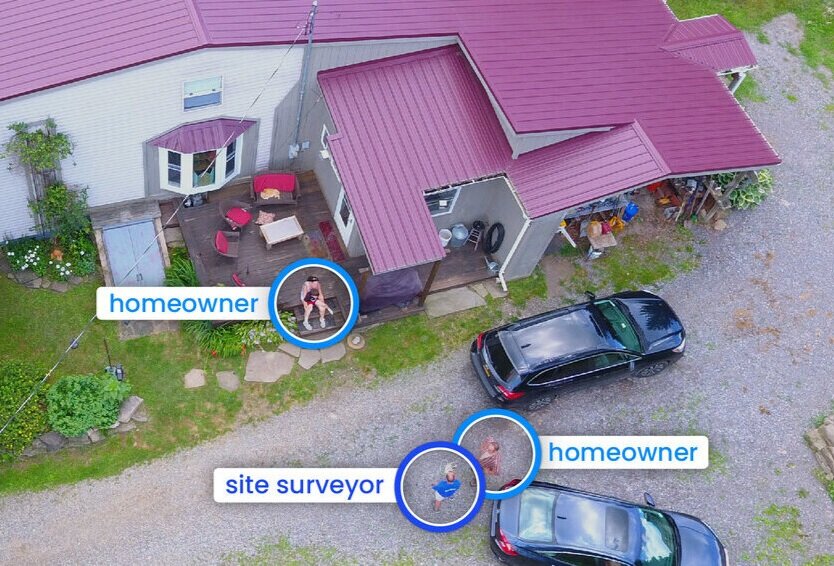Getting a new solar system is exciting, especially for the financial possibility of saving on electricity costs, or even making money. But also remember you’re putting a mini power plant on your roof, so it’s serious business and can be stressful. Since the Scanifly team is composed of all former site surveyors, system designers, project managers and installers, many of our family and friends have turned to us with questions about going solar. Here are the top five to consider:
1. How do I choose between buying, leasing and financing my solar project?
The value of a solar project comes from the energy produced (and cost savings) over time, usually a period of years. To get started, you can either buy, finance, or lease your solar system.
A good contractor should first assess your financial situation before giving you an answer.
If you have the cash on hand and don’t need it for anything else, paying up front will be the most financially beneficial option. This avoids any interest payments, and you accrue the various incentives, such as the investment tax credit and any local or state rebates and renewable energy credits (RECs).
If you want to finance the system with a loan, a contractor should explain their offering (if they have one), and encourage you to look into other financing options, such as a home equity line of credit (HELOC), traditional loan or credit unions.
Leasing is not a preferred option since the monthly bills never stop and you never own your system. However, it can be a low cost way to get into solar. If a contractor has a leasing product, they should also provide details about possible buy-out options down the line.
For financing or leasing a project be sure to ask about step ups in interest rates and various assumptions for year-over-year changes in electricity rates and system output. Any inflation figures above 3% should be recalculated in a more conservative outlook.
We recommend creating a simple chart to analyze the different options. Here is a simple example of a chart we created for a family member:
| System Wattage | 9,570 | 9,180 |
| kWh/yr expected | 7,219 | 9,572 |
| Total System Cost of Time | $34,315 | $15,142 |
| Incentives Included | None | ITC, state rebates, RECs |
| Effective $/Watt | $3.59 | $1.65 |
In your table, you can also consider monthly payments and for how long. A lease or loan may be more advantageous if the monthly payments are spread out over a long period of time. For those more sophisticated financial minded people, a time value of money (TVM) calculation is most effective. Ultimately, you want the effective $/watt figure.
2. What hardware will be used?
Solar projects are technology-intensive, both in terms of software and hardware. While you often won’t see the software – contractors use it to make backend designs – you’ll end up with a lot of hardware on your property including:
-
The panels themselves.
-
The wiring and conduits necessary to connect panels to the electrical system.
-
Racking structures, clamps and bolts to attach panels safely to the roof.
-
An inverter, which acts as the brain of the array, and converts the electricity from DC to AC so it can be used by your home’s devices.
-
Additional electrical equipment, such as a DC disconnect, batteries, charging stations and other components specific to your property.
A good contractor will explain how each of these pieces fits into the broader system. They should also explain how the electrical system will work in your specific instance, including fire safety, shut off valves, how the power gets from the panels to your meter, and how the utility tracks this.
Additional questions to ask about hardware:
-
Where are the hardware companies headquartered?
-
Where is the hardware manufactured?
-
What are the warranty terms?
-
Who will fix the hardware if it is broken or stops working? How quickly will that fix occur?
3. When will you do an onsite roof survey?

Be careful of companies that try to plan your solar installation without an onsite survey. In order to do this, they would need to rely on satellite images, which are not perfectly accurate most of the time and therefore require manual verification.
The vast majority of solar contractors come on site for surveys, so it’s usually a question of when, not if. Note that you should try to schedule it when you’re home so you can let them in the house (sometimes they need to check the attic) and so you can see what they are checking / ask any questions you may have. Ideally, they are doing the onsite survey before you are expected to sign the sales contract.
4. How is shading analysis measured on site?
The more sun exposure a property gets, the greater the system production. A good contractor will be honest with you about what is causing shade and what, if anything, can be changed.
Some contractors estimate shade remotely using satellite imagery-based tools. These assumptions should always be scrutinized because they don’t necessarily accurately depict tree heights, rooftop obstructions and surrounding structures that cause shade. They also don’t include elevation differences. Other contractors manually calculate shading on the property. This is more accurate than a remote, satellite imagery based solution because it is real time data. However, this can still lead to errors in production forecasting. The best contractors use technology to help them, such as drones with Scanifly software, because of the accuracy and automation improvements versus incumbent solutions. Scanifly’s drone-enabled software has been approved by state regulators and lenders across the US.
A contractor may also suggest that you make some changes to optimize sun exposure on the roof, such as cutting down a tree. However, they should never pressure you to make changes, but instead should show you the estimates with and without the shade. For example, if you cut down a big tree causing a lot of shade, they should be able to estimate how much more power the system could generate.
5. Are there changes between the sales proposal and the final layout? If so, why?
Changes can happen between proposals and design, and not all changes are bad. These typically stem from the difference in accuracy between a satellite imagery based estimated layout and the final design created from the real, onsite measurements. Regardless, you deserve to know if the project you agreed to is the thing getting installed.
Common and normal changes:
-
Adjusting how many panels there are (or where panels are placed) due to updated roof measurements.
-
Any changes in production estimates based on updated shading analysis.
-
Adding panels to an outbuilding or garage, if requested later on, to increase system capacity.
Changes to watch out for:
-
Removing panels because of obstructions not found in a remote or manual survey versus using a drone.
-
Removing or changing panels due to measurement errors from a manual survey.
-
Electrical or structural adjustments, especially where wiring and conduits will run.
-
Changes in costs that are not well explained.
If you notice significant changes from your sales proposal to a final plan, be sure to ask how it will impact both price and energy production. You may also want to ask about production guarantees, which is the solar company promising they will deliver on what they said they would (within a range).

Be an informed consumer
Solar is exciting because it’s cheap, efficient, green, and the source is unlimited. And most solar contractors work in good faith and are mission driven, so asking questions isn’t about trying to catch a bad contractor (though it does help).
From both a financial and a technology perspective, you’re making a pretty big decision. With this in mind, asking questions is about making sure you feel confident and comfortable in the process of going solar.






